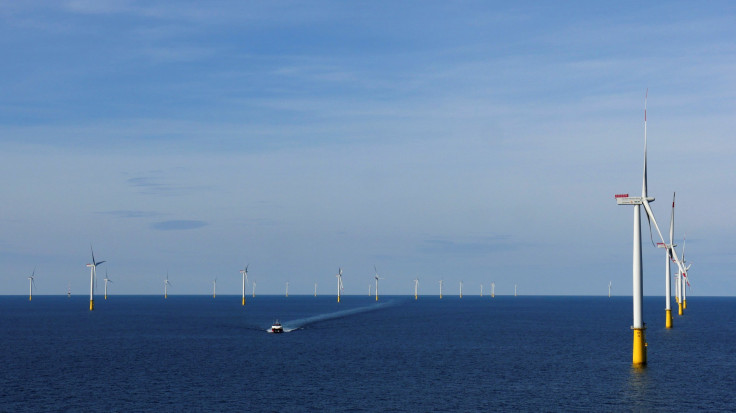Is Offshore Wind Safe? Fishermen Study Effects As First Farms In The US Set To Open Soon

After years of setbacks, the first commercial American offshore wind farm is now just days away from producing electricity to the energy grid, while scientists and fishermen off the New England coast continue to assess the potential impact of turbines on the sea life in the area.
The pilot project, known as the Block Island Wind Farm, could change the way the 9,734 square-mile island powers itself but could also disrupt the fishing patterns in areas near the turbines—an unattractive prospect for local fishermen. Because of such an unprecedented undertaking, project fishermen have expressed concern that there could still be impending disruptions to their livelihoods.
“You don’t know what’s gonna happen once electricity starts flowing through the wires,” Anthony Ponte, a fisherman there, told Boston NPR affiliate WBUR in a report published Monday. Ponte said that he hadn't noticed any issues yet.
The teams of scientists and fishermen monitoring the small wind farm, which is expected to provide enough electricity for about 17,000 homes, haven’t found much to worry about and neither have local fishermen not involved in the study. Instead, coral reefs have actually developed on the bases of the turbines that have attracted populations of fish there.
The $300 million project is ambitious, but there are national implications about its potential success.
“It’s going to be a stepping stone,” Walt Trombly, a union representative for the Utility Workers Union of Rhode Island, told Gizmodo earlier this month. “The entire country is going to see this.”
Block Island Wind Farm may be the first offshore location in the U.S. but it is far from the first in the world. European countries have installed thousands of turbines off of their shores with some wind farms including as many as 300 turbines. Each cost about $30 million to build, install and connect to the power grid. Once connected, however, the stronger and more consistent winds from the ocean help to provide more reliable energy sources than on-shore wind turbines.
The U.S. has had onshore wind power for years and its capacity has grown year after year as more turbines have been installed and prices have dropped. Renewable energy, including wind and solar power, accounted for roughly 11 percent of the total U.S. energy portfolio in 2015.
© Copyright IBTimes 2024. All rights reserved.






















